10 Best Telephoto Lenses in 2024 — Reviews and Top Picks
Last Updated on

Every serious photographer or videographer should have a telephoto lens in their bag. The wide focal range of a telephoto will enable you to get shots of a variety of genres, whether it’s portraiture, street photography, or a huge landscape. Compared to a standard zoom lens, this will give you further reach and be a perfect combo for any situation that you encounter.
Below, we’ll dive into our reviews of the 10 best telephoto lenses for this year and give you some valuable information to know before you pull the trigger.

A Quick Comparison of Our Favorites (2024 Update)
| Image | Product | Details | ||
|---|---|---|---|---|
| Best Overall |
 |
Sony 70-200 f2.8 GM OSS II |
|
CHECK PRICE |
| Best Value |
 |
Tamron 70-180 f2.8 for Sony E-Mount |
|
CHECK PRICE |
| Premium Choice |
 |
Canon RF 70-200 f2.8 IS USM |
|
CHECK PRICE |
 |
Nikon NIKKOR Z 70-200 f2.8 S |
|
CHECK PRICE | |
 |
Tamron SP 70-200 f2.8 Di VC G2 for Nikon |
|
CHECK PRICE |
The 10 Best Telephoto Lenses:
1. Sony 70-200 f2.8 GM OSS II — Best Overall
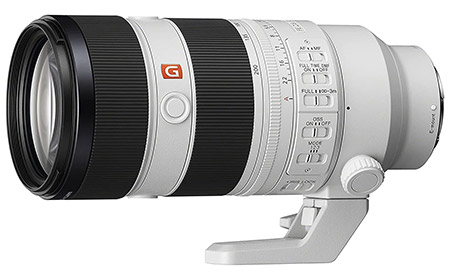
| Weight: | 2.3 lbs |
| Filter size: | 77 mm |
Since their launch of the updated 70-200 f2.8 GM II, Sony has had nothing but positive feedback from professionals and amateurs alike. This recently-released telephoto has shed a huge chunk of its weight, which was a major pitfall of its predecessor. The lens has the incredibly sharp image quality and top-notch autofocus you need, especially when paired with their flagship A1 camera. Sony’s new hood design for this lens is now full-coverage, rather than their original petal-shaped hood. It’s compatible with Sony’s 1.4x and 2x teleconverters, so you can get even more reach. It comes standard with image stabilization, as well as many useful control buttons for ease of use.
There aren’t many things wrong with this lens. However, as it’s one of their highest-performing lenses, the price is not exactly cheap. Still, it’s the best overall telephoto lens out there.
- Lightweight
- Brilliant clarity and bokeh
- Stabilized
- Fast constant aperture
- Superb build quality
- Expensive
2. Tamron 70-180 f2.8 for Sony E-Mount — Best Value
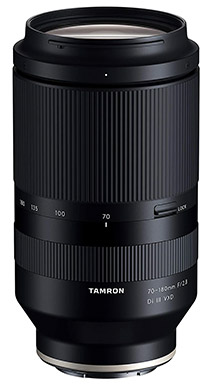
| Weight: | 1.8 lbs |
| Filter size: | 67 mm |
The best telephoto lens for the money has to be the Tamron 70-180 f2.8 for Sony’s E-Mount system. With such a compact and minimal design, you’d think this lens would have some aperture limitations. That isn’t the case with the Tamron, as it stays at f2.8 throughout the zoom range. It’s lighter than pretty much every f2.8 lens in its class and doesn’t compromise in sharpness. The picture quality out of this lens is impressive for what it is, despite being much lower in cost than other options. Even though it is made with a plastic outer frame, the lens still holds up well.
Yet, the most obvious downside of this lens is its unusual focal range—the 70-180 is 20 millimeters short of the 200 mm mark that we are so used to. Many people believe this isn’t a huge deal though, as it can still zoom far enough for their needs. Also, keep in mind that it doesn’t have image stabilization. This means the lens will take more effort (and potentially a tripod) to keep it steady. In addition to that, there is no lens collar, so using a tripod may not be as good as other lenses with this feature.
- Lighter and more compact than the Sony 70-200 f2.8 GM II
- Affordable compared to standard 70-200s
- Sharp and detailed
- Great autofocus
- Fast constant aperture
- Zoom lock for storage
- No image stabilization
- Restrictive focal range
- No lens collar included
3. Canon RF 70-200 f2.8 IS USM — Premium Choice
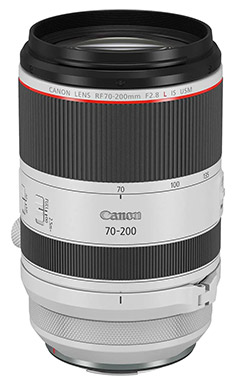
| Weight: | 67 mm |
| Filter size: | 77 mm |
Although its price point isn’t budget-friendly, Canon’s RF 70-200 is an ultra-sharp lens that you won’t regret picking up. With a constant 2.8 aperture, you’ll have tons of separation between your subject and background. Image stabilization is integrated into the lens, which can be turned off and on with a switch. There are a few other external buttons for custom control, such as an AF/MF switch, stabilization orientation adjustment switch, and a focus distance switch. The 70-200 f2.8 IS USM isn’t that much heavier than the Sony, so it is relatively light to travel with.
The prices of high-end Canon RF lenses have always been an arm and a leg, so don’t expect to walk away without an empty wallet. Otherwise, this lens is awesome!
- Fast constant aperture
- Incredible sharpness and detail
- Image stabilization
- Quality materials and construction
- Expensive
4. Nikon NIKKOR Z 70-200 f2.8 S
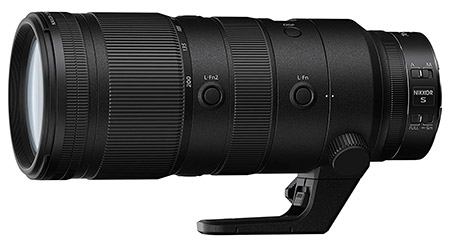
| Weight: | 3.09 lbs |
| Filter size: | 77 mm |
Our first pick for Nikon telephotos is their Z-mount NIKKOR 70-200, a constant aperture zoom that excels with its autofocus and crisp imagery. The sharpness of this lens is phenomenal and it controls aberrations very well. Nikon’s NIKKOR Z telephoto doesn’t fall short in any performance category, with strengths in both moving subjects and portraiture. It comes in cheaper than the Canon RF and Sony GM lenses, but it’s still expensive. Compared to those lenses, it’s a bit heavier and a whole lot larger. We don’t recommend this lens for travelers who care about portability. This lens is all about performance and features, so that is what you get in turn.
- Fast constant aperture
- Image stabilization
- Accurate and fast autofocus
- Heavy and massive
- Expensive
5. Tamron SP 70-200 f2.8 Di VC G2 for Nikon
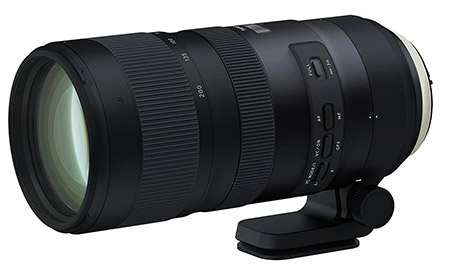
| Weight: | 3.28 lbs |
| Filter size: | 77 mm |
For those out there who love Nikon FX, the Tamron SP 70-200 might be your best budget option. If you buy the lens brand-new, you can get a 6-year limited warranty in case anything goes wrong with your unit. Teleconverters are able to be used with this lens, despite it being from a third-party brand. The Tamron telephoto has great performance all-around and doesn’t have the exorbitant price tag of the NIKKOR lens (not the one we’ve shown above). But be aware that the weight of this lens exceeds 3 pounds and can be uncomfortable to use on long shoots. Luckily, a lens collar is provided with your purchase so you can keep the weight centered for added stability on a tripod.
- Fast constant aperture
- Image stabilization
- Easy-of-use switches
- Affordable
- Heavy
6. Sony FE 135 mm F1.8 GM Prime
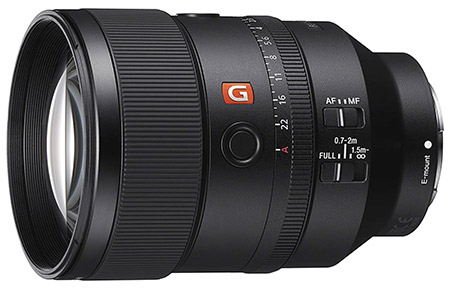
| Weight: | 2.1 lbs |
| Filter size: | 82 mm |
Telephoto prime lenses aren’t nearly as common as wide angles or the nifty-fifty, but they have a special place for the right photographer. The 135 1.8 G-Master by Sony is an incredible feat of engineering that boasts 11 circular-aperture blades, resulting in some of the best bokeh you may ever see. As a premium lens, this G-Master telephoto has all the great perks you’d expect: customizable focus hold buttons, a de-clickable aperture ring, an AF/MF switch, and a handy focus limiting switch. The close-focusing distance is roughly 27.5”, so the lens is capable enough to handle macro photography.
Although you will be stuck at 135 mm, you can use this focal length to your advantage for weddings and portraits, as the constant 1.8 aperture will let you capture tons of background blur.
- Incredibly sharp
- Spot-on silent autofocus
- 8 constant aperture
- Useful focal length
- Perfect bokeh balls
- Heavy for a prime lens
- Expensive
- Bulky design
- No stabilization
7. Canon RF 70-200 f4 L IS USM
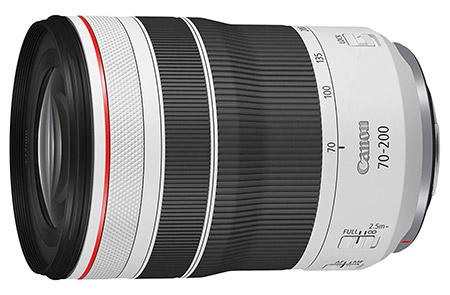
| Weight: | 1.53 lbs |
| Filter size: | 77 mm |
An ultra-portable telephoto lens from Canon, their own RF 70-200 f4 is the best alternative to their f2.8 model but still has great performance. The obvious inferiority here is the slower constant f4 aperture, but at these focal lengths, you can still manage to get plenty of background blur for portraits. The price of this lens is much more practical for hobbyists, and it still has a great set of features. Image stabilization wasn’t left out and there’s also a minimum focusing distance of fewer than 2 feet. Oh, and one thing that makes it stand out from many others here is its zoom lock. Not bad for a budget lens.
- Lightweight and ultra-compact
- Cheaper than the f2.8 version
- Close minimum focusing distance
- Zoom lock
- “Slow” constant aperture
- Not as sharp as the f2.8 version
8. Sony FE 70-200 f2.8 GM OSS
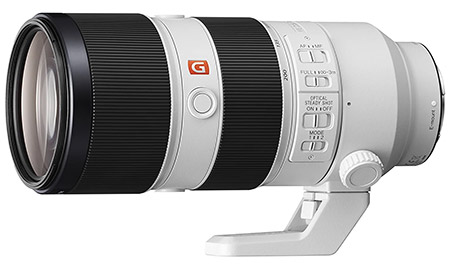
| Weight: | 4.91 lbs |
| Filter size: | 77 mm |
Although Sony has released their new and improved f2.8 GM II for their telephoto lineup, their original FE 70-200 F2.8 still isn’t a bad lens in terms of its performance. For a long time, this lens was prized for its sharpness and usefulness in a great number of photography genres. However, the biggest complaint by most users was that it was simply too big and too heavy to travel with. At close to 5 pounds, you’d surely get tired after extended handheld use. But there weren’t many other options that could compete; the Tamron lacks stabilization, and their F4 isn’t nearly as sharp. If you can’t spend the money on their new 70-200, this might be the right one to go with if you can deal with the weight, as they’ve slashed the price significantly.
- Much less expensive than their new version
- Sharp and detailed
- Image stabilization
- Extremely heavy and bulky
- Still relatively expensive
9. Sigma 70-200 f2.8 Sports DG OS for Canon
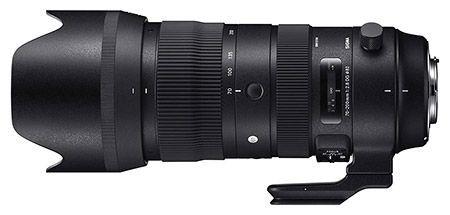
| Weight: | 3.09 lbs |
| Filter size: | 82 mm |
Sigma makes a lot of quality lenses, and their 70-200 f2.8 sports lens for Canon EF and EF-S mounts is a great alternative to their high-end version. Compared to it, this glass still has high-quality performance and image stabilization. As it’s a sports lens, the autofocus is superb. You’ll even be able to manually override the lens with a switch if need be, which is located right in the middle of the AF/MF switch. Don’t overlook the weight, though; it’s almost half a pound heavier than the Canon RF lens.
- Image stabilization
- Manual override
- Inexpensive
- Heavy and bulky
10. Sony FE 70-200 f4 G OSS
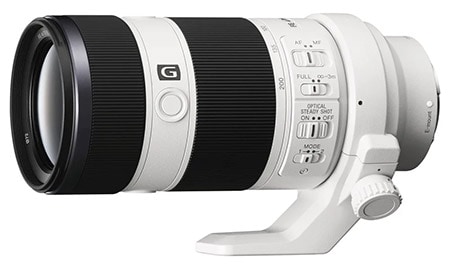
| Weight: | 1.85 lbs |
| Filter size: | 72 mm |
The last on our list of telephoto lenses is the Sony 70-200 F4. It’s one of the few alternatives to their flagship f2.8 telephoto, making it a more compelling option. However, at its price range, you could potentially pick up the Tamron 70-180, which is a better lens all-around. However, if you really need the stabilization and are strict with having native glass, this might be your go-to. It’s not a terrible lens, as it still has good autofocus and is reasonably sharp. The weight of this lens is great as well, making it portable for travel or prolonged use. Again though, you’ll have better results with other options.
- Lightweight and compact
- Image stabilization
- Bright enough for most situations
- Expensive for what it is
- Not the sharpest telephoto out there

Buyer’s Guide: Choosing the Best Telephoto Lens
We’ve put together a few essential features and characteristics of lenses below, so you can be sure of what model your heart is set on. Do note that many of our lens reviews vary with their mounting systems. You may need an adapter to use certain lenses with non-native camera bodies.
Aperture
Most of the classic 70-200 lenses out there will be a constant f2.8 or f4. The f4 version may weigh a bit less, but you’ll likely have trouble if you prioritize background separation and sharpness. As they are used commonly for portraiture and wildlife, the f2.8 variant is a popular choice that you can’t really go wrong with. The f4 may be better for those who need something cheaper that they can start out with.
Portability
While many lenses claim to be “lightweight”, there’s only so much you can do to keep the heft of your equipment at a minimum. Long lenses with fast apertures are inevitably going to be somewhat heavy. If you are an avid hiker or traveler, you may need to sacrifice aperture, stabilization, or premium build materials when you make a purchase. In any case, it’s good to have lenses that do not exceed 3 pounds, as this is quite difficult to use for long shoots.
Stabilization
With a telephoto lens, stabilization is a major plus. Without it, you’ll have to use a tripod or practice keeping it steady, especially in low-light situations where you have to slow down your shutter speed. The effect of stabilization will play a bigger role in your most extreme telephoto focal lengths, such as 150 mm or 200 mm. However, it does add weight and cost to the lens, so that can affect your choice as well.

Conclusion
After taking a look at our reviews of the 10 best telephoto lenses, our opinions are mostly positive. The second generation of Sony’s 70-200 f2.8 is the best overall piece of glass on the market, with no compromises in its performance. On the other hand, those who are on a budget can pick up the Tamron 70-180 for a lot cheaper but at the cost of a few practical traits. Canon’s RF 70-200 f2.8 is an incredibly sharp lens, and you won’t be disappointed by its quality.
There we have it—a ton of worthy telephoto glass you can decide on depending on what camera you own. Choose wisely, and don’t forget to check out a standard zoom and wide-angle zoom to complete your kit!
Featured Image Credit: Denis Andricic, Shutterstock
Table of Contents
- A Quick Comparison of Our Favorites (2024 Update)
- The 10 Best Telephoto Lenses:
- 1. Sony 70-200 f2.8 GM OSS II — Best Overall
- 2. Tamron 70-180 f2.8 for Sony E-Mount — Best Value
- 3. Canon RF 70-200 f2.8 IS USM — Premium Choice
- 4. Nikon NIKKOR Z 70-200 f2.8 S
- 5. Tamron SP 70-200 f2.8 Di VC G2 for Nikon
- 6. Sony FE 135 mm F1.8 GM Prime
- 7. Canon RF 70-200 f4 L IS USM
- 8. Sony FE 70-200 f2.8 GM OSS
- 9. Sigma 70-200 f2.8 Sports DG OS for Canon
- 10. Sony FE 70-200 f4 G OSS
- Buyer’s Guide: Choosing the Best Telephoto Lens
- Conclusion
About the Author Robert Sparks
Robert’s obsession with all things optical started early in life, when his optician father would bring home prototypes for Robert to play with. Nowadays, Robert is dedicated to helping others find the right optics for their needs. His hobbies include astronomy, astrophysics, and model building. Originally from Newark, NJ, he resides in Santa Fe, New Mexico, where the nighttime skies are filled with glittering stars.
Related Articles:
How to Clean a Refractor Telescope: Step-by-Step Guide
How to Clean a Telescope Eyepiece: Step-by-Step Guide
How to Clean a Rifle Scope: 8 Expert Tips
Monocular vs Telescope: Differences Explained (With Pictures)
What Is a Monocular Used For? 8 Common Functions
How to Clean a Telescope Mirror: 8 Expert Tips
Brightfield vs Phase Contrast Microscopy: The Differences Explained
SkyCamHD Drone Review: Pros, Cons, FAQ, & Verdict



